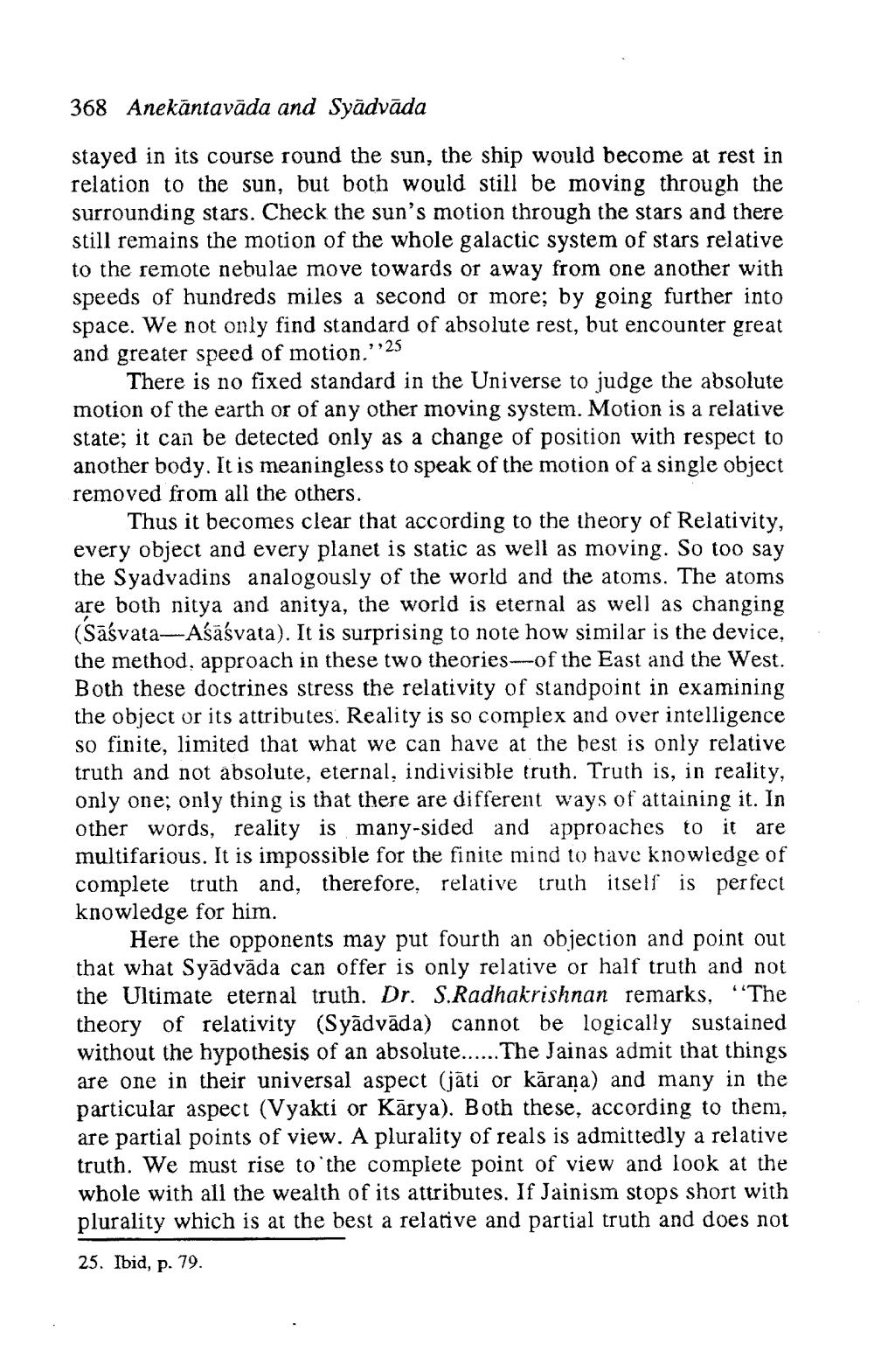________________
368 Anekāntavāda and Syädvāda
stayed in its course round the sun, the ship would become at rest in relation to the sun, but both would still be moving through the surrounding stars. Check the sun's motion through the stars and there still remains the motion of the whole galactic system of stars relative to the remote nebulae move towards or away from one another with speeds of hundreds miles a second or more; by going further into space. We not only find standard of absolute rest, but encounter great and greater speed of motion.''25
There is no fixed standard in the Universe to judge the absolute motion of the earth or of any other moving system. Motion is a relative state; it can be detected only as a change of position with respect to another body. It is meaningless to speak of the motion of a single object removed from all the others.
Thus it becomes clear that according to the theory of Relativity, every object and every planet is static as well as moving. So too say the Syadvadins analogously of the world and the atoms. The atoms are both nitya and anitya, the world is eternal as well as changing (Sasvata-Asasvata). It is surprising to note how similar is the device, the method, approach in these two theories--of the East and the West. Both these doctrines stress the relativity of standpoint in exa the object or its attributes. Reality is so complex and over intelligence so finite, limited that what we can have at the best is only relative truth and not absolute, eternal, indivisible truth. Truth is, in reality only one; only thing is that there are different ways of attaining it. In other words, reality is many-sided and approaches to it are multifarious. It is impossible for the finite mind to have knowledge of complete truth and, therefore, relative truth itself is perfect knowledge for him.
Here the opponents may put fourth an objection and point out that what Syādväda can offer is only relative or half truth and not the Ultimate eternal truth. Dr. S.Radhakrishnan remarks, “The theory of relativity (Syādvāda) cannot be logically sustained without the hypothesis of an absolute...... The Jainas admit that things are one in their universal aspect (jāti or kärana) and many in the particular aspect (Vyakti or Kārya). Both these, according to them, are partial points of view. A plurality of reals is admittedly a relative truth. We must rise to the complete point of view and look at the whole with all the wealth of its attributes. If Jainism stops short with plurality which is at the best a relative and partial truth and does not
25. Ibid, p. 79.




